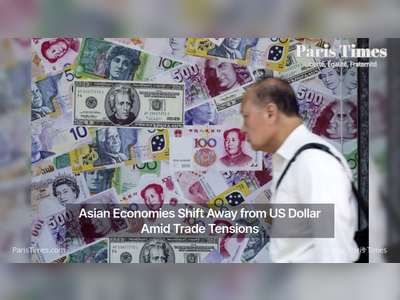
Global Inflation Rates Show Signs of Stabilization Amid Mixed Economic Indicators
Inflation trends in major economies reflect a complex interplay of factors as central banks adjust their monetary policies.
Inflation rates across several major economies have begun to show signs of stabilization after a prolonged period of volatility attributed to the COVID-19 pandemic and subsequent supply chain disruptions.
According to recent data, inflation in the United States eased to 3.7% in September 2023, down from a peak of 9.1% in June 2022. This trend reflects the Federal Reserve's aggressive interest rate hikes aimed at curbing inflation but also highlights ongoing challenges such as labor market tightness and rising commodity prices.
In Europe, inflation rates remain stubbornly high, with the Eurozone reporting an average inflation rate of 5.2% in October 2023. The European Central Bank (ECB) faces pressure to balance economic growth with the need to control inflation, prompting discussions about future interest rate adjustments.
Meanwhile, the United Kingdom reported a year-on-year inflation rate of 6.5% in September, influenced by energy costs and food prices, forcing the Bank of England to maintain a cautious monetary stance.
Emerging economies face mixed inflationary pressures.
In Brazil, inflation has decreased significantly from its highs earlier in the year, currently standing at 4.6%.
The Central Bank of Brazil has responded with interest rate cuts aimed at stimulating economic growth.
Conversely, in Turkey, inflation remains a significant challenge, peaking at 60.4% in September 2023, prompting concerns about the sustainability of the country's economic policies.
Asian economies are also navigating inflationary dynamics.
China's consumer price index recorded an inflation rate of just 0.2% in September, raising concerns about deflation and the potential impact on growth.
The People's Bank of China has taken measures to bolster liquidity in the economy, showing a commitment to stimulating domestic demand.
Market analysts note the potential impact of geopolitical tensions, particularly the ongoing conflict in Ukraine and its implications for energy markets, alongside disruptions in trade relations that can exacerbate inflationary pressures globally.
Commodity prices, including oil and food, have fluctuated in response to these geopolitical events, influencing inflation rates in various countries.
As central banks recalibrate their policies in response to these evolving conditions, the balance between fostering growth and controlling inflation remains a critical challenge for policymakers worldwide.
According to recent data, inflation in the United States eased to 3.7% in September 2023, down from a peak of 9.1% in June 2022. This trend reflects the Federal Reserve's aggressive interest rate hikes aimed at curbing inflation but also highlights ongoing challenges such as labor market tightness and rising commodity prices.
In Europe, inflation rates remain stubbornly high, with the Eurozone reporting an average inflation rate of 5.2% in October 2023. The European Central Bank (ECB) faces pressure to balance economic growth with the need to control inflation, prompting discussions about future interest rate adjustments.
Meanwhile, the United Kingdom reported a year-on-year inflation rate of 6.5% in September, influenced by energy costs and food prices, forcing the Bank of England to maintain a cautious monetary stance.
Emerging economies face mixed inflationary pressures.
In Brazil, inflation has decreased significantly from its highs earlier in the year, currently standing at 4.6%.
The Central Bank of Brazil has responded with interest rate cuts aimed at stimulating economic growth.
Conversely, in Turkey, inflation remains a significant challenge, peaking at 60.4% in September 2023, prompting concerns about the sustainability of the country's economic policies.
Asian economies are also navigating inflationary dynamics.
China's consumer price index recorded an inflation rate of just 0.2% in September, raising concerns about deflation and the potential impact on growth.
The People's Bank of China has taken measures to bolster liquidity in the economy, showing a commitment to stimulating domestic demand.
Market analysts note the potential impact of geopolitical tensions, particularly the ongoing conflict in Ukraine and its implications for energy markets, alongside disruptions in trade relations that can exacerbate inflationary pressures globally.
Commodity prices, including oil and food, have fluctuated in response to these geopolitical events, influencing inflation rates in various countries.
As central banks recalibrate their policies in response to these evolving conditions, the balance between fostering growth and controlling inflation remains a critical challenge for policymakers worldwide.











